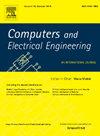Multi objective framework for optimal allocation of electrical fast charging stations using enhanced slime mould algorithm
IF 4
3区 计算机科学
Q1 COMPUTER SCIENCE, HARDWARE & ARCHITECTURE
引用次数: 0
Abstract
In this paper, a novel optimization methodology based on single and multi-objective formulation is proposed for optimal allocation of electric fast charging stations (EFCSs). The suggested methodology is planned for selecting the optimal candidate buses to supply the EFCSs in mesh transmission networks. Moreover, the algorithm locates the EFCSs geographically by determining the service line length of the connecting cable between the EFCS and the candidate bus. Afterwards, this problem is solved using the enhanced slime mould algorithm (ESMA) characterized by a novel searching technique, adaptive grouping strategy, and efficient learning operator. The adapted objective aims to minimize the summation of voltage deviations at all buses due to the high-power demand of EFCSs. Additionally, another objective is formulated concerning the line stability aspect and solved using the multi-objective version of SMA (called MOSMA). Finally, the problem gets more comprehensive by incorporating an economic perspective of minimizing the total running energy cost during the whole charging process. It is worth mentioning that the proposed ESMA’s performance is validated and compared with other competitors such as the traditional SMA, particle swarm optimizer, and osprey optimization algorithm. In all cases, the ESMA outperforms all other competitors by attaining the minimum objective function values satisfying all the operational constraints. Using the computed metrics for each simulation set, the outcomes of the multi-objective particle swarm optimizer and the multi-objective water cycle algorithm are compared to the proposed MOSMA. Highlighting some results, the MOSMA achieves total voltage deviations of 14.9 % and energy cost of $4109.55 in the IEEE 14-bus benchmark test case. Undoubtedly, the MOSMA establishes its superiority in solving this complicated optimization problem either in 2-D or 3-D objective formulations.
基于改进黏菌算法的快速充电站优化配置多目标框架
本文提出了一种基于单目标和多目标的快速充电站优化配置方法。所建议的方法是计划选择最佳候选总线,以提供网状传输网络中的efcs。此外,该算法通过确定EFCS与候选总线之间连接电缆的业务线长度来对EFCS进行地理定位。然后,采用一种新颖的搜索技术、自适应分组策略和高效学习算子的增强黏菌算法(ESMA)解决了这一问题。调整后的目标是尽量减少由于efcs的高功率需求而导致的所有母线电压偏差的总和。此外,还制定了关于线路稳定性方面的另一个目标,并使用SMA的多目标版本(称为MOSMA)进行求解。最后,从最小化整个充电过程中总运行能量成本的经济角度出发,使问题更加全面。值得一提的是,所提出的ESMA的性能得到了验证,并与传统SMA、粒子群优化器、鱼鹰优化算法等竞争算法进行了比较。在所有情况下,ESMA通过获得满足所有操作约束的最小目标函数值而优于所有其他竞争对手。利用每个模拟集的计算指标,将多目标粒子群优化器和多目标水循环算法的结果与所提出的MOSMA进行了比较。突出一些结果,在IEEE 14总线基准测试用例中,MOSMA实现了14.9%的总电压偏差和4109.55美元的能源成本。毫无疑问,无论是在二维还是三维目标公式中,MOSMA在解决这一复杂的优化问题方面都具有优势。
本文章由计算机程序翻译,如有差异,请以英文原文为准。
求助全文
约1分钟内获得全文
求助全文
来源期刊

Computers & Electrical Engineering
工程技术-工程:电子与电气
CiteScore
9.20
自引率
7.00%
发文量
661
审稿时长
47 days
期刊介绍:
The impact of computers has nowhere been more revolutionary than in electrical engineering. The design, analysis, and operation of electrical and electronic systems are now dominated by computers, a transformation that has been motivated by the natural ease of interface between computers and electrical systems, and the promise of spectacular improvements in speed and efficiency.
Published since 1973, Computers & Electrical Engineering provides rapid publication of topical research into the integration of computer technology and computational techniques with electrical and electronic systems. The journal publishes papers featuring novel implementations of computers and computational techniques in areas like signal and image processing, high-performance computing, parallel processing, and communications. Special attention will be paid to papers describing innovative architectures, algorithms, and software tools.
 求助内容:
求助内容: 应助结果提醒方式:
应助结果提醒方式:


